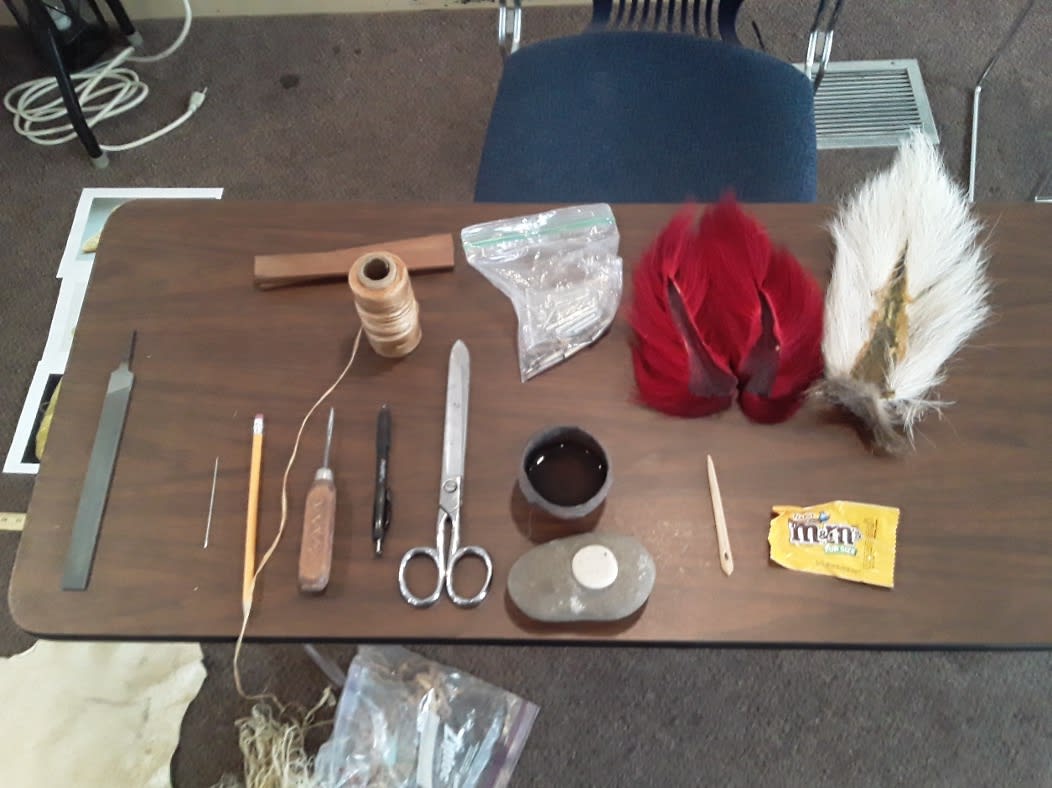Never judge a man until you’ve walked a mile in his moccasins, then you can say what you like because you’re a mile away and you have his moccasins!
— Native American proverb, or something.
So now the poor schmuck has to make a new pair, and here, I have the opportunity to share what this process looks like!
Moccasins have been worn by American Indian people all over North and South America — they come in a wide variety of styles but more or less have stayed the same for many generations. The most important part about making any type of moccasin is starting with good quality materials, like brain tan deer, elk, or moose hide, as well as your sewing materials and cutting tools, like scissors, awl, and knife. Below are a few of the tools that I begin with when making a new pair of moccasins.

I always have examples of original moccasins to look at when I start a new pair just to remind myself of the details that make them so unique, and remember to measure 34 times, cut once. Better make it 35.

So now that everything is together, I start to draw the pattern onto the hide.


These pictures show the process of marking the stitches and pounding the seam thin so it puckers better.


The next step in creating these moccasins is to start sewing. Sinew, dogbane thread, and leather were all used to sew up moccasins in the 18th century.



Many moccasins were also decorated with porcupine quills like this pair. Although the extent of decorations is up to the person making them.
Here are some photos of original moccasins, both decorated and undecorated.




Moccasins are usually soft soled, and unique to each tribe who makes them. They can be fairly simple or very elaborate, covered in delicate embroidery and other decorations. They are the wear of choice in the eastern woodlands, and the terrain is well suited to them. A hunter is able to take advantage of the thin, soft leather by feeling every step he takes, moving much quieter than someone wearing hard soled shoes. The diplomat standing in the halls of a foreign country puts his best foot forward, the moccasins on his feet attesting to his desire for quality, while negotiating trade. It is said the only things a man own are his clothes and tools, if he comes home to find his moccasins outside the door, he knows his wife wants him gone. Indeed, they are made for walking, and a traveler may carry two or three pairs while trading, or hunting for extended periods of time. They are one of the few items we still make from leather in the 18th century, because of their unique qualities and expressive nature; and moccasins are still made and worn today during dance, at home, or simply as everyday wear.
Talon Silverhorn is a citizen of the Eastern Shawnee Tribe of Oklahoma and has worked as an American Indian interpreter at the Foundation for three years. He is an avid archer and enjoys making historical reproductions and discussing tribal government.
